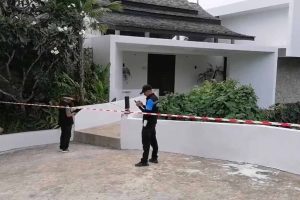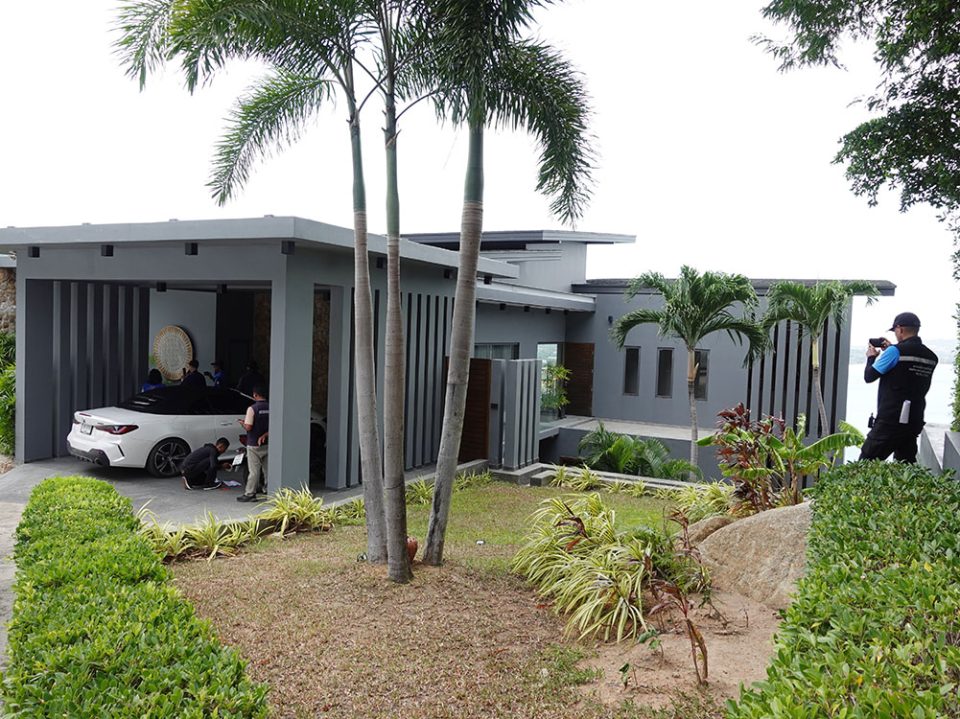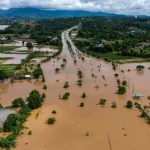A series of luxury villas on Koh Samui, meant to be demolished long ago, continue to thrive in the shadows, openly defying the law. Despite clear orders from the local government, these high-end residences, part of two prominent projects, remain standing, renting out to unsuspecting tourists, who come from all over the world to enjoy the island’s beauty—at a heavy cost. Each day, these villas rake in hundreds of thousands of baht, as if they were legal businesses, when in fact, their very existence is in question.
The story begins on 18 September, when over 50 government officials, under the leadership of Pol. Col. Dusit Kasornkaew, head of the Task Force to Resolve State Land Grabbing and Natural Resource Destruction, descended upon the hilltops of Lamai Subdistrict, in Maret District. There, they inspected 11 villas. Their next stop took them to Khun Hmanang Mountain in Bo Phut Subdistrict, where they encountered another cluster of eight illegal villas.
As they ventured from one property to the next, officials met with a Luxembourgish tourist staying in one of the Lamai villas. The tourist, unaware of the villa’s illegal status, had signed a six-month contract with a foreign owner. He was paying a hefty 7,000 euros in monthly rent—approximately 259,490 baht. Upon realizing the grim reality, the man expressed disbelief. How could he have known? The authorities explained to him that the villa was under a demolition order, and the municipality would be pressing charges against its owner.
Across the island at the Bo Phut site, officials made another unsettling discovery. Eight villas had been sealed off with red and white tape, meant to block entry. Yet, to the officials’ dismay, these properties were still in use. One villa, a completed two-storey building without planning permission, was already being rented out. The upper floor had been leased to a cleaning company for 5,000 baht a month, while the lower floor had been converted into rental rooms. One French citizen had paid 20,000 baht for a room, completely oblivious to the villa’s legal troubles.
 Violations abounded, particularly in relation to the 2019 ban on using illegal structures under the Samui Municipal Control Act. Another villa housed a family of three Russian tourists, who had paid 200,000 baht for a two-week stay. Like the others, they had no clue about the villa’s pending demolition and were left in shock after being informed by the authorities.
Violations abounded, particularly in relation to the 2019 ban on using illegal structures under the Samui Municipal Control Act. Another villa housed a family of three Russian tourists, who had paid 200,000 baht for a two-week stay. Like the others, they had no clue about the villa’s pending demolition and were left in shock after being informed by the authorities.
According to Pallop Meepian, a legal expert from Samui Municipality, the inspections confirmed widespread violations across both sites. The municipality had already ordered a halt to all construction, banned the use of these villas, and issued demolition orders. Oddly, none of the villa owners had appealed or filed lawsuits, signaling their acceptance of the legal outcomes.
The authorities moved quickly, sealing off the areas to prevent access and warning that anyone entering would face legal action. Samui Municipality is now preparing to enforce these demolition orders. For the 11 villas in Lamai, a final demolition order will be issued on 30 September 2024, with a deadline set for 20 October 2024. A task force will return for a follow-up inspection the following day.
The fate of the villas in Khun Hmanang Mountain, Bo Phut Subdistrict, is similarly bleak. On 30 September 2024, an official order, known as Order K.6, will prohibit the use of these structures entirely, declaring them too dangerous to inhabit as part of the ongoing legal proceedings. The walls may not have fallen yet, but the countdown to demolition is well underway.




